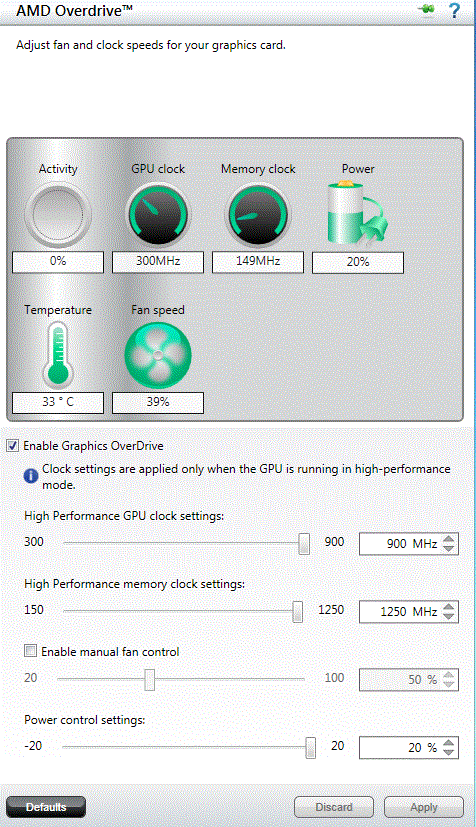Index


Review: With silent and powerfull Double Dissipation cooler
On 13th of February , AMD launched its HD 7000 series of cards - or HD 7770 and HD 7750 to be more precise. We're talking about graphics cards with next generation chips with the so called GCM Graphics Core Next architecture, which promise to deliver improved performance at a lower power cost. Our today's guest is XFX's DD Radeon 7750 800M 1GB (FX-775A-ZDFC) graphics card that's special for its special dual fan design. As you'd suggest, the DD in the name stands for Double Dissipation cooler design. The DD Radeon 7750 800M 1GB runs at reference clocks , i.e. 800MHz for the GPU and 1125MHz for the memory (4500MHz GDDR5).
AMD showed the reference design of its HD 7750s but all the cards we've seen thus far at least got their cooling changed. However, we must commend XFX on strapping its Radeon 7750 with DD cooling. We know that the DD cooler is effective and quiet, since we had it on our Black Super OC DD Radeon 7770 1120M 1GB graphics card that runs at 1120MHz. We're quite sure that the same cooler will have no trouble cooling the Cape Verde Pro GPU on our HD 7750. Note that this GPU is clocked slower than the Cape Verde XT, and we hope that the cooling won't be a limiting factor when it comes to additional overclocking.
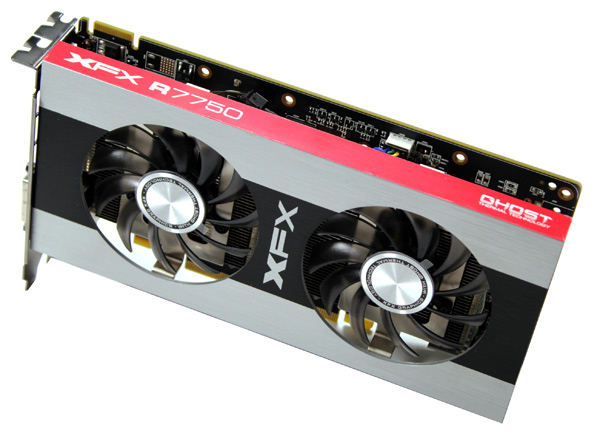
The HD 7700 series belongs to Southern Island family, which is the first GPU family with GPUs made in 28 nanometer silicon fabrication processes, first to use PCI Express 3.0 x16 bus, and first with DirectX 11.1 support.
Cards from the HD 7700 series run on Cape Verde GPU, which is related to the HD 7900 series' GPU called Tahiti. However, Cape Verde is a smaller chip will less capabilities. Compared to the Tahiti's 1792 cores, Cape Verde XT (HD 7770) has only 640 while the PRO version of the chip (HD 7750) comes with 512 cores.
HD 7770 cards have 40 texture units and 16 ROPs. The 1GB of GDDR5 memory runs on 128-bit memory interface. HD 7750 cards have 32 texture units but the number of ROPs and the memory interface are identical to the HD 7770. According to the specs, HD 7770 cards have a TDP of 80W while HD 7750's TDP is 55w. Note that the HD 7750 comes without an external power connector.
XFX’s DD Radeon 7750 runs at reference clocks, as the GPUz screenshot below confirms.
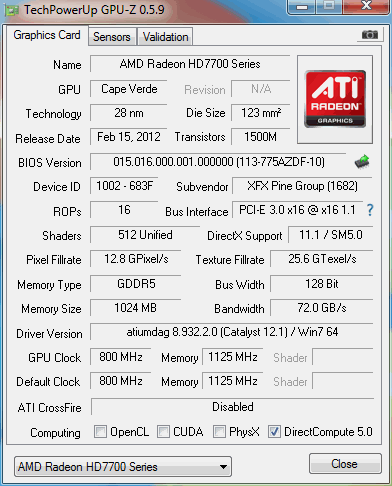
The packaging is similar to the rest of XFX’s HD 7000/6000/5000 offer – small and sturdy. In the box you'll find a driver CD, quick install guide, CD driver install guide, XFX's "Don't Disturb I'm Gaming" door sign and some flyers.
When it comes to vide outs, XFX's DD Radeon HD 7750 1GB comes with standard HDMI and DisplayPort connectors as well as two dual-link DVI outs. You won't need a CrossFire bridge on this card, since it will communicate with other HD 7750s via PCI-Express. Furthermore, there's no need for power connectors as it draws all the power it needs from the PCI-Express slot.
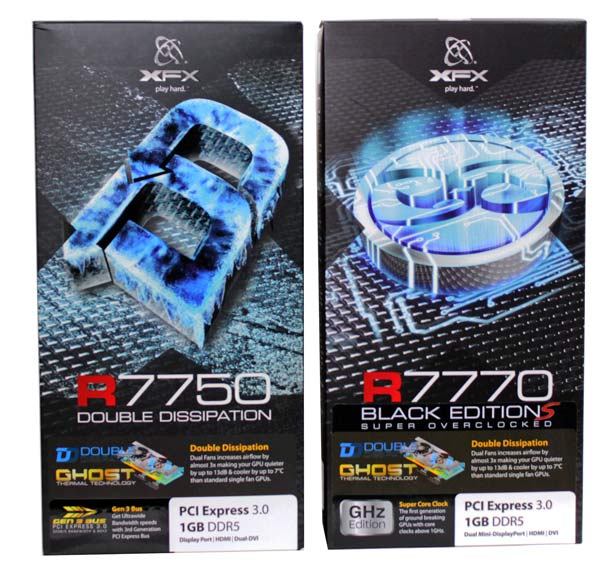
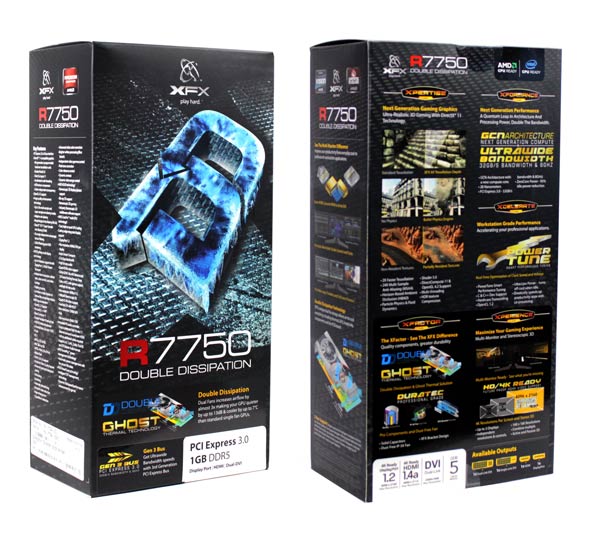
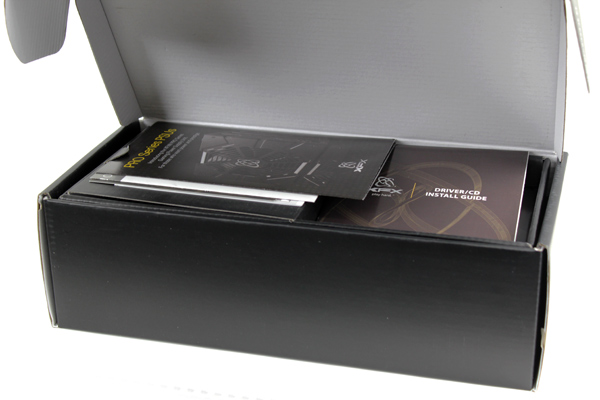

The card we have today is called XFX DD Radeon 7750 800M 1GB D5 DP HDMI DVI (part number FX-775A-ZDFC). You'll recognize the Double Dissipation Cooler easily - it has two fans. Double Dissipation cooler is two slots wide and its cooling capacity far exceeds the needs of the small Cape Verde Pro chip.
XFX DD Radeon 7750 800M is one of the quietest cards we've tested so far. DD cooler's superiority in cooling Radeon 7750 graphics cards was expected since the cooler was designed to cool overclocked HD 7770 cards.
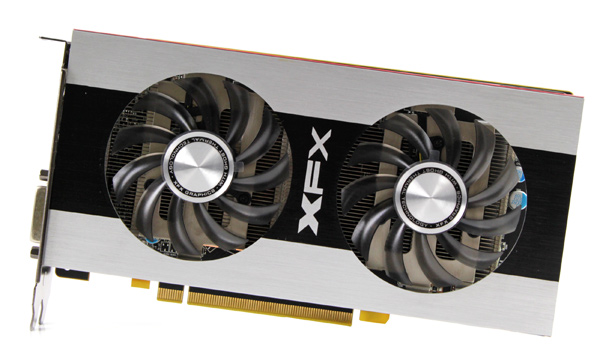
A bird view glance at the card makes it impossible to tell whether the card is DD Radeon 7770 or DD Radeon 7750. Of course, tilting it will reveal the name, which is written on the top side.

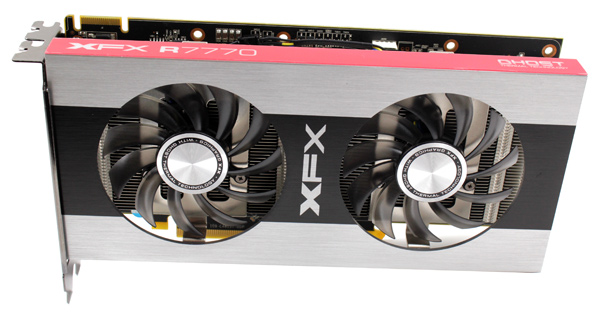
The reference PCB on the Radeon HD 7750 graphics card is shorter than the one on Radeon HD 7770 cards, but XFX uses the same sized PCB for its Radeon 7750 / 7770 cards. This is why the DD cooler can be used on both cards.
That the card is a Radeon HD 7750 is clear from the fact that there is no 6-pin power connector, which can be found on Radeon HD 7770. According to the specs, Radeon HD 7770 cards have a TDP of 80W while Radeon HD 7750's TDP is 55w.
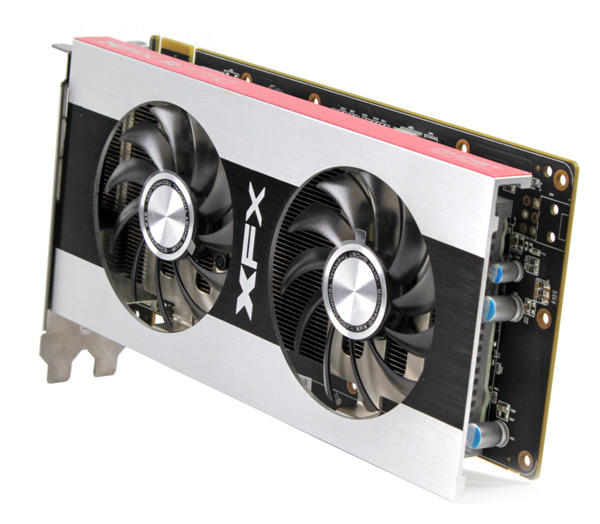
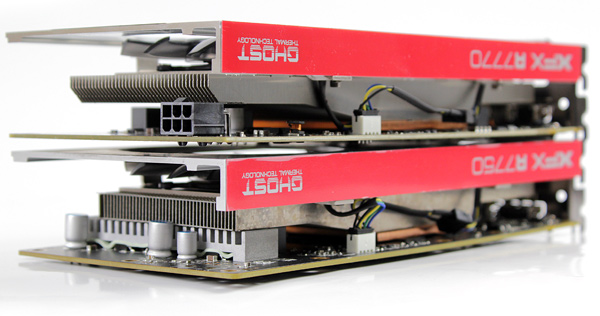
An important part of designing graphics card coolers is supplying enough holes on the cooler so that hot air exits as soon as possible. Furthermore, the holes in the bracket are important with closed, tunnel designs where the fan is at the end of the cooler. XFX's Bracket Design is definitely among the details that will make XFX's cards instantly recognizable.
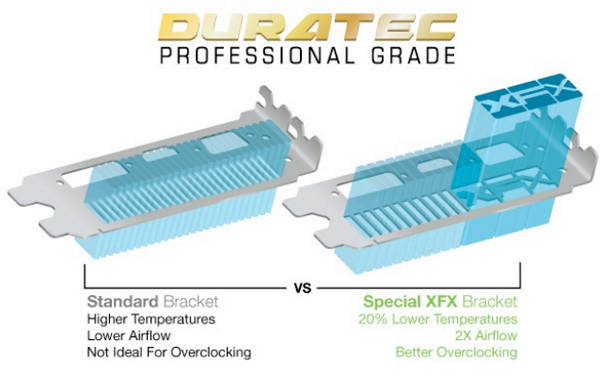
The XFX logo leaves more room for air exiting but it won't matter much with XFX's DD Radeon 7750 card. Namely, the cooler is open design so air exits all around the card and not only through the holes in the bracket.
Cape Verde Pro won't get to hot so XFX could sacrifice part of the bracked to throw in a second dual-link DVI out.
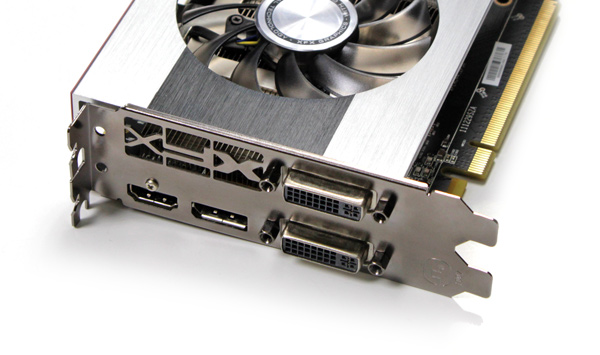
The I/O panel features two dual-link DVI connectors, DisplayPort 1.2 and HDMI 1.4a. As far as sound goes, HDMI 1.4a provides HD audio and support for Blu-ray 3D movies.
XFX's DD Radeon 7750 will simultaneously support three displays, although the third display will have to go via DisplayPort. XFX opted on standard sized connectors, so there are no additional converters in the box.
XFX DD Radeon 7750 800M card is equipped with 1024MB GDDR5 memory. The GDDR5 memory chips are made by Hynix (model number H5GQ2H24MFR-T2C). They are specified to run at 1250MHz (effective 5000MHz), but on this card the memory runs at 1125MHz. The memory chips have no heatsink and are air cooled, although the cooler's base almost touches them.
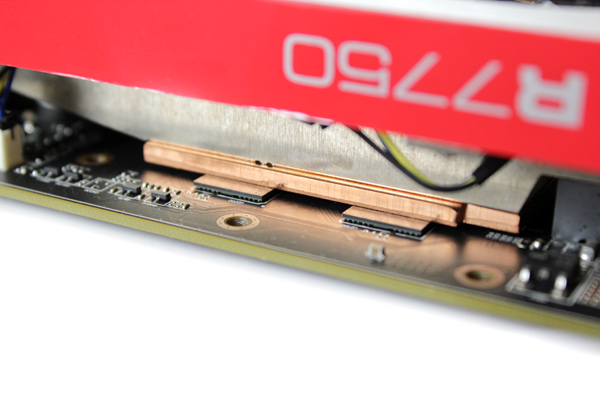
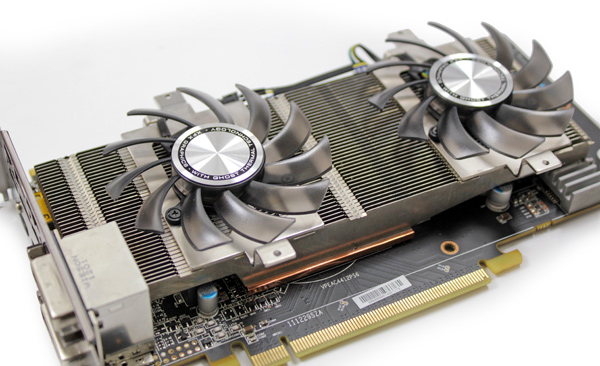
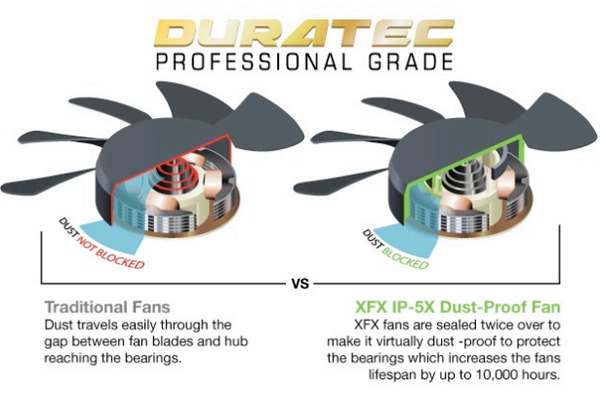
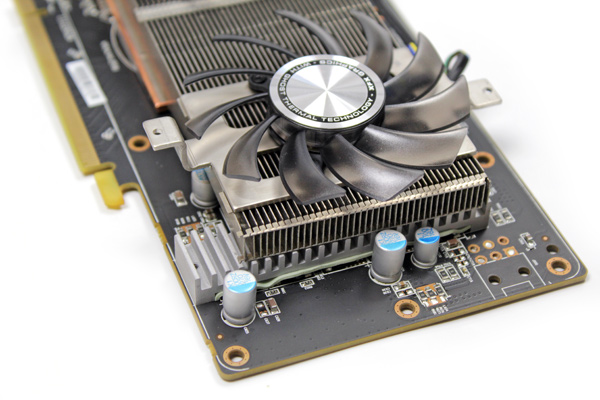
The card is 21cm long, and you may combine it with another HD 7750 card from any vendor in CrossFire.
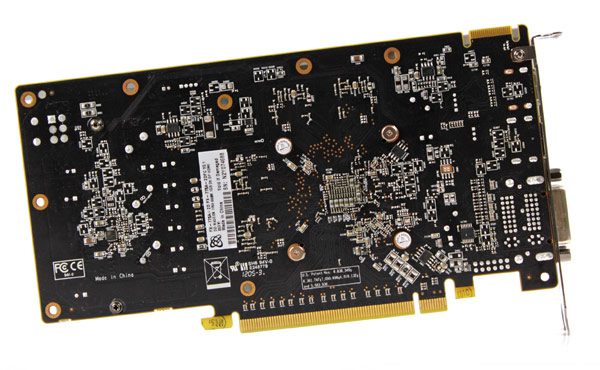
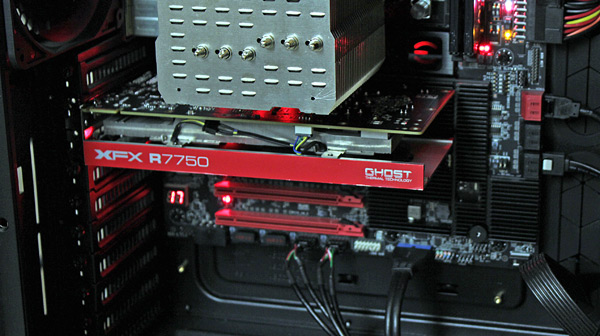
Harddisk: OCZ Vertex 2 100 GB
Power Supply: CoolerMaster Silent Pro 1000W
Case: CoolerMaster Cosmos II Ultra Tower
Operating System: Win7 64-bit
Nvidia 295.73_desktop_win7_winvista_64bit
AMD 12.2 CCC
AMD_radeon_hd7700_win7_64
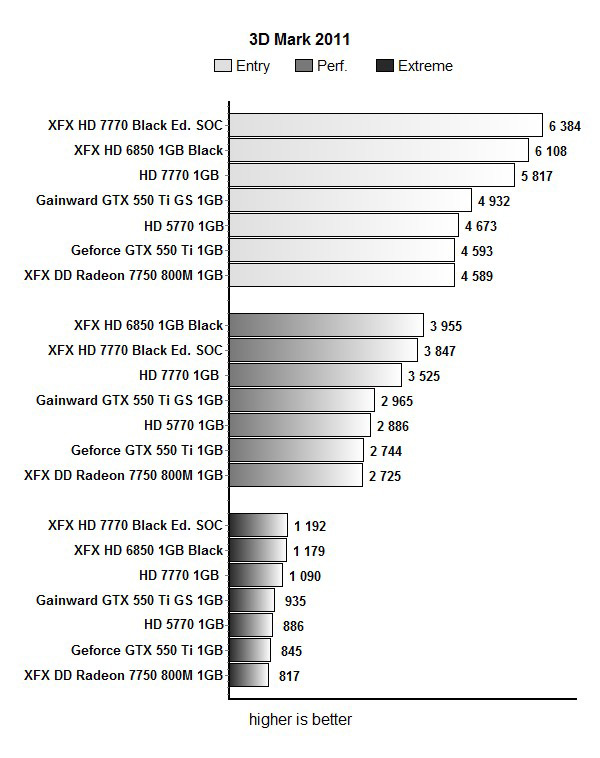
Aliens vs Predator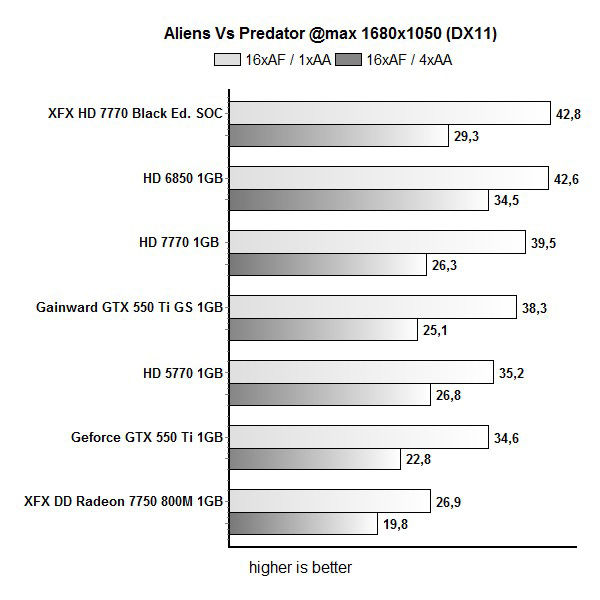
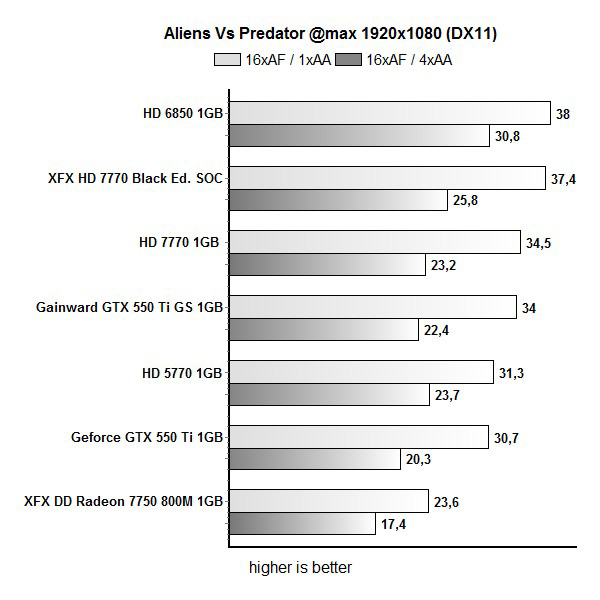
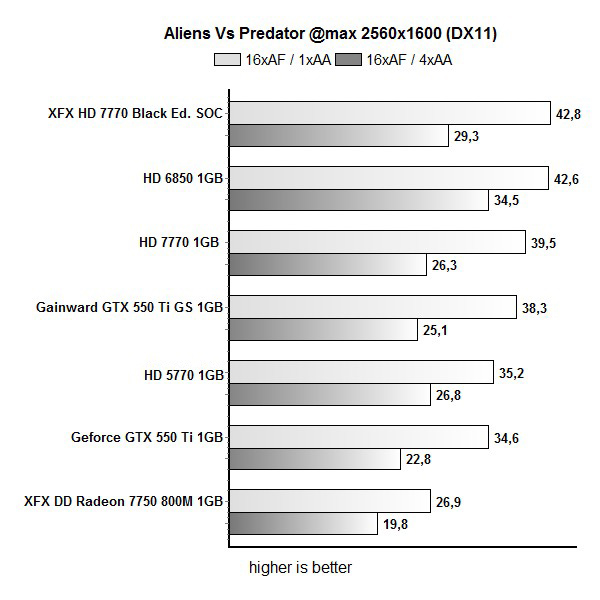
Crysis 2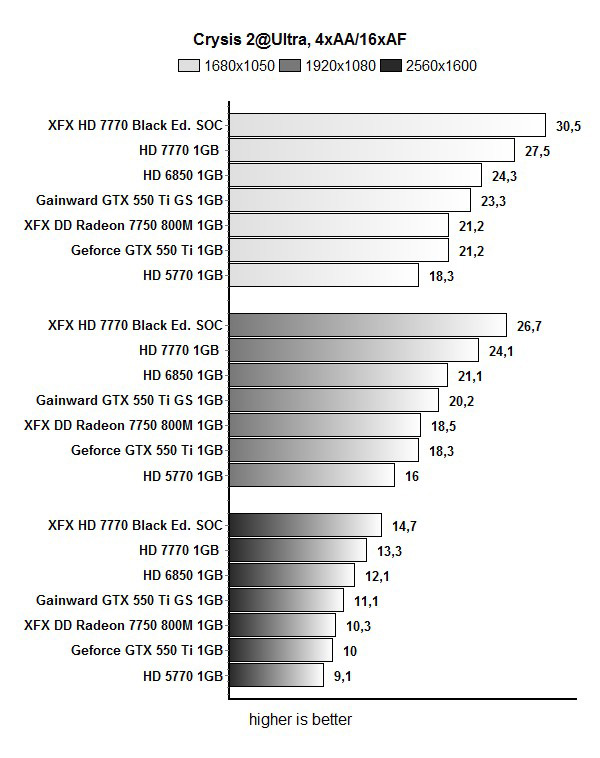
Metro 2033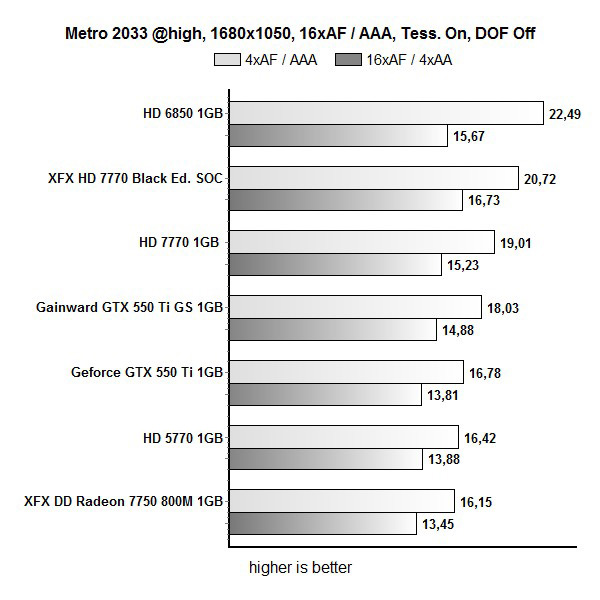
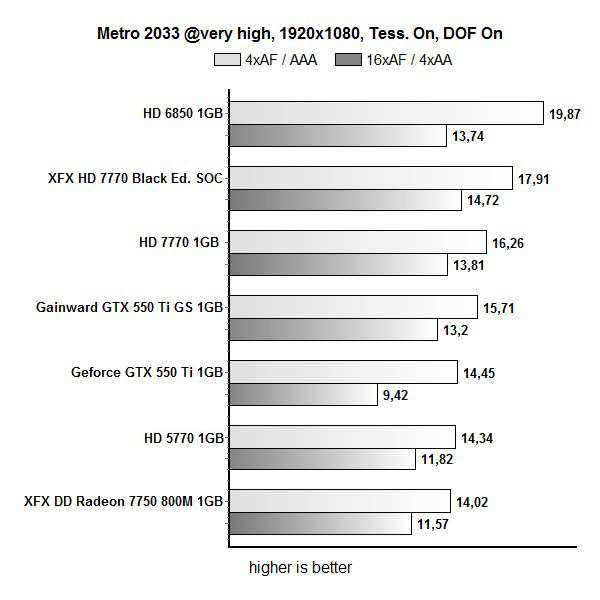
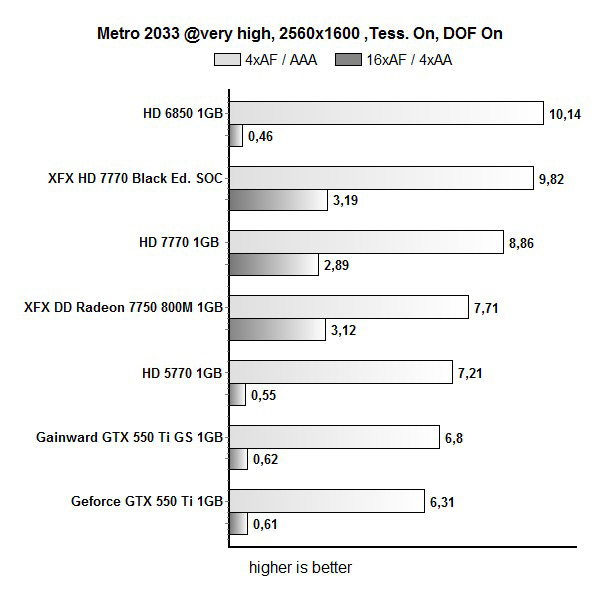
Unigine Heaven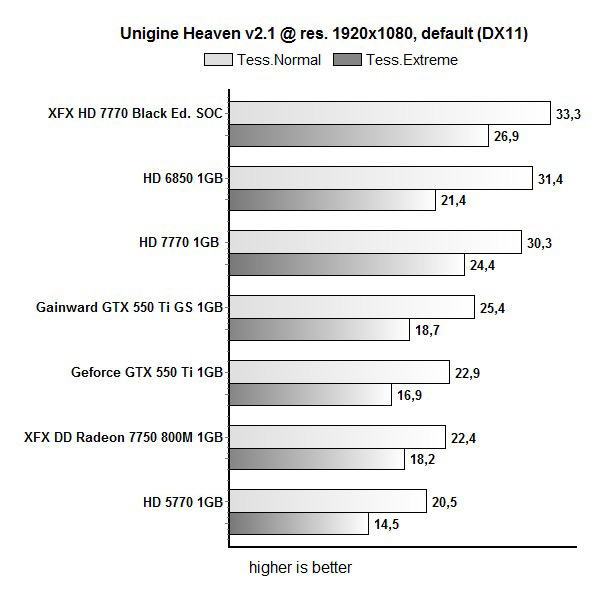
Overclocking
XFX DD Radeon 7750 800M 1GB is not a factory overclocked graphics card. The GPU runs at reference 800MHz and the memory at 1125MHz (4500MHz effectively). ATI Overdrive supports GPU overclocking for DD Radeon 7750 800M cards but the limit fort the GPU clock is set at 900MHz. In order to overclock the card beyond 900MHz, we used MSI's Afterburner.
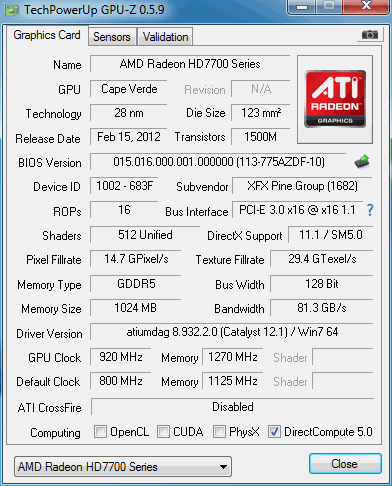
The fan remained quiet after overclocking and although we tried speeding it up manually in order to squeeze a few more MHz over 920MHz, it appears that the final limitation was not cooling but the chip itself. Still, we were quite pleased with the result because we could play most games at 1920x1080.
Thermals and Noise
XFX fans are designed to use linear fan speed ramping controls so that fan speeds and temperatures are optimized to reduce excess noise. This helps by preventing sudden fan speed changes that tend to get loud. The XFX DD Radeon 7750 800M's cooler is great - thermals are good and the card is almost inaudible all the time.
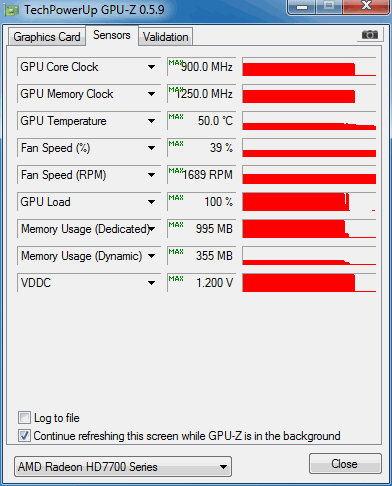
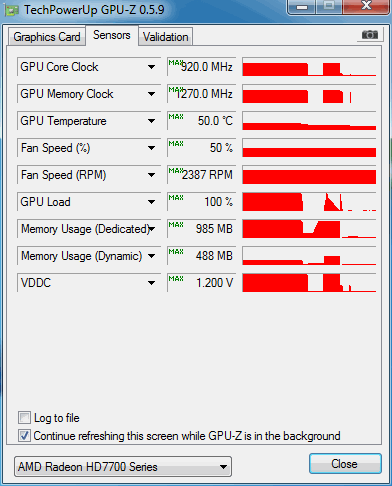
Power Consumption
Power consumption looks really good.
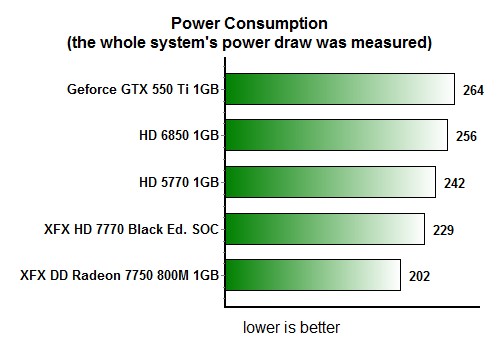
Conclusion
Our today's guest was another XFX's next gen card that boasts a 28nm GPU. One of the flagship features of AMD's graphics cards is low consumption, something that our today's sample already proved. XFX DD Radeon 7750 800M 1GB graphics card packs enough juice to provide pleasant gaming at 1680x1050. The card doesn't need extra power connectors and its TDP is only 55W.
XFX did a great job when it comes to thermals and noise on its Radeon 7750. The company opted on the Double Dissipation cooler that we've seen earlier on their overclocked XFX Radeon 7770 graphics cards. For starters, this means that the card will never overheat as the cooler is more than enough for the needs of Cape Verde Pro chips used on Radeon HD 7750 cards. Furthermore, there's no need for full throttle operation so XFX's DD Radeon 7750 800M is almost inaudible, both in desktop and gaming scenarios.
XFX opted on reference clocks for this card, but overclocking is not an issue. Namely, AMD's Catalyst Overdrive limits GPU overclocking to 900MHz but if you use additional tools, you can go higher.
The only downside to this XFX's DD Radeon 7750 800M 1GB graphics card is that AMD decided to price their Radeon HD 7750 cards similarly to HD 5770/6770 cards. However, although performances of these cards are similar, bear in mind that new games will probably run better with GCM Graphics Core Next architecture. If you're concerned over power consumption then you can rest easily. As you could see from our testing, Radeon HD 7750 consumed about 40W less than Radeon HD 5770.
XFX DD Radeon 7750 800M 1GB is a silent graphics card that consumes little but spews enough juice for pleasant gaming at 1680x1050. The card is priced at about €100 although you should expect to have some issues with availability, which doesn't seem to be great at the moment.


